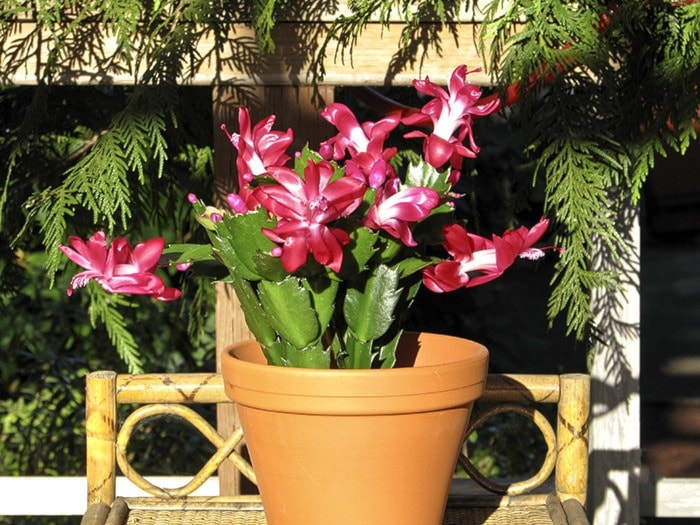Couldn't resist.
Was shopping for a friend...in a nursery, of course. Was only there to buy specifically for the friend with no thought of acquiring anything for myself.
Indeed, had made my selection...but the path to the cashier led past the lovely display of Christmas cactus. Proved much too tempting.
OK. Like I need another houseplant. Especially since I have inherited all of the plants from my parents' solarium.
With the exception of two 90 year old jade trees. Those are adorning the foyer of our church in Victoria. That just left me to find space for the remaining smaller jade...a branch broken from one of the bigger jades that has grown to be a tree in its own right.
Plants, flowers, colour...tempting like I said. As irresistible to me as chocolate is to others. It was a small plant after all. I was certain I could squeeze in a four inch pot somewhere. My present to myself...a Christmas cactus for Christmas.
Or is it?
Not knowing very much about cactus of any kind, I went digging for some information in my library.
Looked it up by its Latin name to hopefully avoid any possible confusion. As I have said before, some plants share common names when they are actually from two different families.
According to its label, my new acquisition is called Schlumbergera. This is the genus name. There are six species noted in this family of cacti...all of them native to the coastal mountain region in southeast Brazil, close to the Tropic of Capricorn.
I was surprised to learn they grow naturally at altitudes ranging from 2,300 feet to over 9,000 feet. But then we are talking about the tropics so the air coming off the ocean would be quite warm. However, some of the species growing at the higher elevations do endure below freezing temperatures overnight.
Another interesting fact is all of the Schlumbergera species grow in a similar manner as orchids. Some of these cacti are epiphytes, meaning they grow on trees and other plants.
Non-parasitic to their host, they draw the necessary nutrients and moisture from rain and air. They will also supplement from any debris that gets caught and accumulates in the area where they are attached to the plant.
The other cacti in the schlumbergera genus are lithophytes. They grow on rocks or in rock crevices.
This would be why it is important not to over-water these cacti, potted up as they are in soil. Hopefully, the growers have used a soil mix with some grit in it to improve drainage.
Now...here is where it gets a little confusing for me in accurately identifying my new Christmas cactus. According to information I have gathered thus far it would appear its form and flowering habit is more like that of Schlumbergera truncata...the species more commonly known as the Thanksgiving cactus.
This is because it is predictably in flower in and around the date of the American Thanksgiving holiday...the fourth Thursday in November.
However...in the description of Schlumbergera truncata the pollen is noted as yellow. The pollen on my cactus is most definitely pink.
Using that descriptive, my plant falls under what is called "the Buckleyi Group" which contains all of the newest hybrids of various flower colours including pink, white, yellow and red. And the common name for this group is...Christmas cactus.
But then, going by what I have read about this particular group, the stems and spiny teeth are all wrong on my plant. I am confused. Will need to do more research.
In the meantime, I think I will call my plant Schlumbergera splendens. Means brilliant colour and its flowers are certainly that.
Leslie Cox co-owns Growing Concern Cottage Garden in Black Creek. Her website is at www.duchessofdirt.ca and her column appears every second Thursday in the Record.
